I adored Copenhagen – such a clean and exciting city! On my first trip I spent 3 days there, but felt that I was rushing a little and leaving with stuff that I had missed. I have since returned and would suggest a 5 day itinerary which will be more relaxed and will also include a day trip to Malmo in Sweden.
The Good news….and the Bad News about Copenhagen
The great news is that Copenhagen is a very walkable city and they also have a sleek and efficient public transport system. The bad news is that it is VERY expensive so come with plenty of Krona. On my first day in Copenhagen I got hit hard by a coffee and cake fast approaching £20!
Planning your 5 Days in Copenhagen
- Choose the spring or summer months to visit as it can get cold in the winter. I went in July which was perfect!
- Take plenty of money as it’s not cheap. I would recommend a budget of around £100 per day at least ($120). Also change up some cash money into Danish Krona.
- Book your flights – fly into Copenhagen Kastrup airport
- Buy the Lonely Planet Copenhagen Pocket Guide – Although you can find a lot of information online, I do still like to have a guidebook and this one is small and compact. It’s got some great tips and restaurant recommendations.
- Download the Viggo Taxi app to your phone – this is Copenhagen’s alternative to Uber.
- Talk good sturdy walking boots and a waterproof jacket as there is a bit of walking and the weather can be unpredictable.
- Read up on the Danish concept of ‘Hygge’ – this is the term used to describe that cosy feeling when you and your friends are all snuggled up with a blanket and drinks around a warm fire!
Copenhagen – Getting there and away
Fly into Copenhagen Airport – Kastrup – which is only around 8km from Copenhagen and well connected by train, metro and bus. You will be in the centre of Copenhagen from there within about 20 minutes!
It is also possible to travel overland from Sweden because Sweden and Denmark are connected by the Øresund Bridge.
A Summary of your 5 Days in Copenhagen
The itinerary will be split into four days in Copenhagen to see the main sites and then one day trip to Malmo in Sweden as it’s connected by bridge and easy to get to from Copenhagen by train.
- Day 1: Main Sites of Nyhavn, Amalienborg, Fredericks Kirke, Gefion Fountain, Saint Albans Kirke, Kastellet and The Little Mermaid.
- Day 2: Christiansborg Palace, Børsen, Knippels Bridge, Freetown Christiania, Church of our Saviour, Contiki Bar!
- Day 3: Torvehallerne Market, Rosenburg Castle, Rundetaarn (round tower), Rådhuspladsen and Tivoli Gardens (historic theme park!)
- Day 4: Frederiksberg Have, Vesterbro and Meat Packing District (food).
- Day 5: Day trip to Malmo, Sweden, by train.
Day 1: Nyhavn to Kastellet
On your first day you will take a walk from Nyhavn (17th-century waterfront) to Kastellet (fortress). Although this walk is only just over 1km, there are so many things to see on the way.
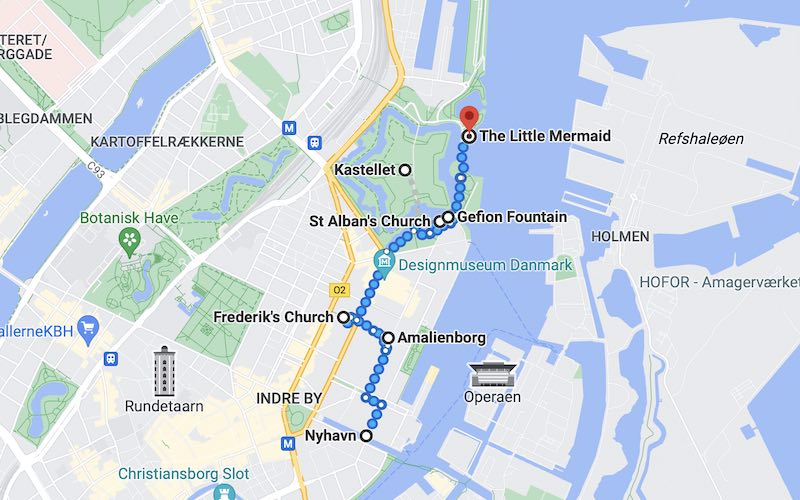
Nyhavn
Nyhavn is the classic picture postcode view that everyone recognises Copenhagen from – the tall 17th Century colourful houses overlooking the waterfront. If you have time it’s a great idea to take a canal tour of Copenhagen from there. It really is wonderful to see Copenhagen by boat and the canal tour is just one hour so it is doable within your first days schedule. You can book the Copenhagen Canal tour here with Get Your Guide. Remember to arrive at the pick up point 15-30 minutes ahead of the departure time.
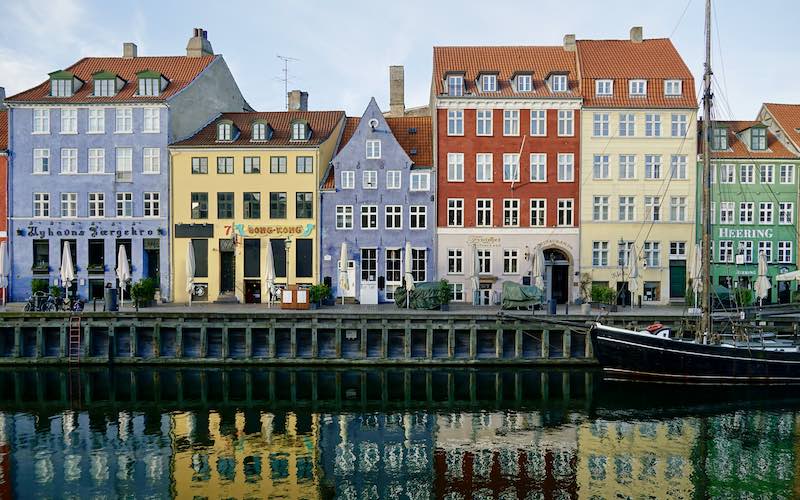
Amalienborg Palace
After exploring Nyhavn, make your way to Amalienborg palace – the Danish Royal family’s residence. The changing of the guards happens at noon daily, so it is a good idea to time your arrival to be just before. It’s free to walk around the Amalienborg palace grounds (including the octagonal courtyard), but you will need to pay to go inside and it’s usually with a guided tour. The four palace buildings are built in Rococo – an ornamental architectural style from the 1750s. If you are going inside the palace take at least two hours to fully explore and see the changing of the guards.
Frederiks Kirke (Frederiks Church)
Frederiks Kirke, also known as the Marble Church, is a stunning neoclassical church with an instantly recognisable green dome. It was designed by the architect Nicolai Eigtved in the mid-18th century, but due to financial difficulties, the construction of the church was delayed for several decades. They realised that it would be too expensive to complete in Marble and so the ‘Marble Church’ was not completed in marble after all!
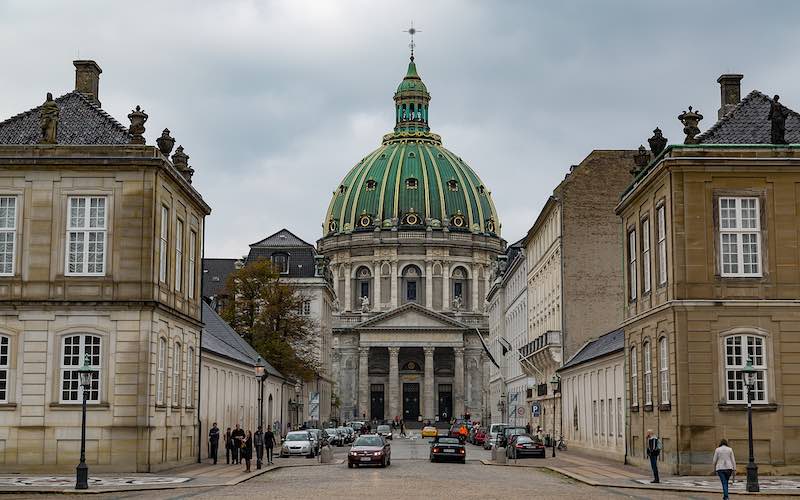
In the late 18th century, the project was revived and completed by the architect C.F. Hansen. The church’s dome, which spans 31 meters in diameter and is one of the largest in Europe, dominates the Copenhagen skyline. The church’s interior features a beautiful marble columns, intricate frescoes, and a large organ. Frederiks Kirke is a true masterpiece of Danish architecture and a must-see for anyone visiting Copenhagen.
Visiting the Church is free, but there is a charge to go up the tower.
Lunch Stop – You will certainly be feeling hungry at this point, so I recommend a food stop at ‘Punk Royale’ which is just a 3 minute walk from Frederiks Church.
Saint Albans Church and Geffion Fountain
After lunch, head to Saint Albans Church, a gorgeous Anglican Church that was built from 1885 to 1887 in a gothic architectural style. Saint Albans is often referred to as ‘The English Church’ due to the large English congregation it has. The Church is free to enter and they will also give you a card with information about the interior and stained glass.
In front of Saint Albans you will see a large stepped fountain with oxen pulling a plough and being guided by the Norse Goddess Gefjon. Legend has it that the Swedish King ‘Gylfi’ promised Gefjon as much land as she could plough, and so she turned her four sons into Oxen in order to plough as much land as she could! The earth thrown into the sea is what created the Danish Islands!
Kastallet Fortress
Next you will walk towards Kastallet – one of the best preserved star shaped fortresses or citadels in Europe. It was constructed in the 17th century by King Christian IV as a part of his grand plan to modernize and fortify the city’s defences. The pentagon shaped fortress is surrounded by a moat that is still filled with water. The fortress’ interior is home to numerous historic buildings, including a church, barracks, and a windmill. Kastellet also features beautifully manicured gardens and walking paths so it’s a lovely place for a leisurely stroll, especially if you are there in the spring or summer and have good weather.
The Little Mermaid
Your final destination of the day will be the famous ‘Little Mermaid’ statue – a world-famous bronze statue which was inspired by the fairy tale written by Danish author Hans Christian Andersen. The statue was sculpted by Edvard Eriksen in 1913 and portrays a mermaid sitting on a rock, gazing longingly out to sea. It became a famous symbol of Denmark and is a popular tourist attraction. A word of advice – when you go to see the little mermaid, she is very little! Some people report being disappointed and say that she is one of the most underwhelming sites that they have seen on their travels. But go without high expectations – I. think she is very cute. It’s just unfortunate that we are often deceived about her size by camera angles!
Day 2 – Christianborg Palace to Freetown Christiania and the Church of our Saviour
One of my favourite days in Copenhagen was the day that I crossed the Knippels Bridge to explore Freetown Christiania and the Church of Our Saviour. Start your journey by exploring Christianborg Palace, which is the Danish Parliament (Folketinget). You will also see Børsen – the old stock exchange, which is one of my favourite danish buildings. But the best thing about day 2 in my opinion is exploring the hippy hangout of ‘Freetown Christiania’ – comprising a community that has its own independent rules and regulations.
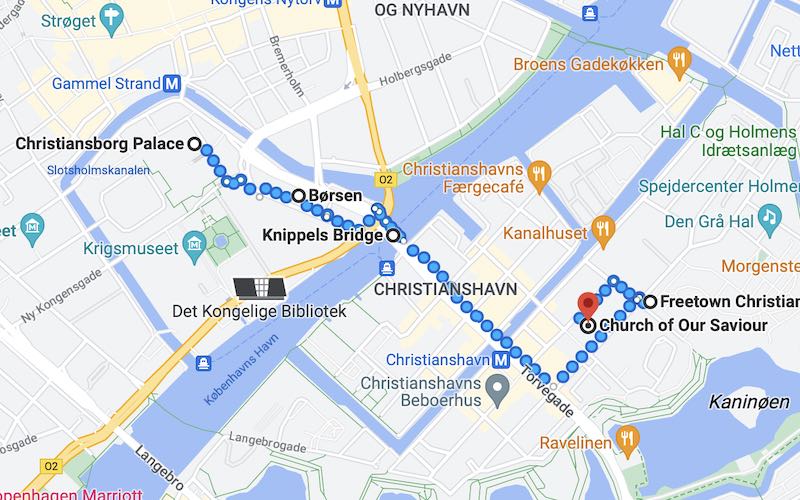
Christiansborg Palace
Christianborg Palace has been the home of the Danish parliament, the Supreme Court, and the Prime Minister’s office for over 100 years. It’s free to walk around the grounds and you can also see inside – you will need to buy a ticket or book this. For the outside only you can see everything in around half an hour to an hour, but if you want to enter, go early and spend 2-3 hours there.
Børsen
Børsen was founded in 1620 and is one of the oldest stock exchanges in the world. The exchange building, which is also known as the “Old Stock Exchange,” is a stunning example of Dutch Renaissance architecture and is one of Copenhagen’s most famous landmarks. The building’s iconic spire is shaped like the tails of four dragons, which intertwine to form a pointed spire. Surprisingly, Borsen still operates as a stock exchange today and is also used for various events and functions. You will be able to take photographs of the architecture, but the inside is not currently open to tourists.
Knippels Bridge
From Børsen you will be crossing Knippels Bridge to get to Christianshavn, the district where you will find Freetown Christiania ands the Church of our Saviour.
Freetown Christiania
Freetown Christiania is a self-proclaimed autonomous neighborhood located in Copenhagen. It was established in 1971 by a group of hippies and squatters who took over an abandoned military barracks in the city’s Christianshavn district. Christiania has since become a unique and alternative community known for its liberal attitudes, artistic culture, and independent way of life. It’s my favourite part of Copenhagen and I’d recommend that you stop for lunch here from one of the food trucks and pop up cafes. Spend at least an hour exploring here – I spent 2-3!
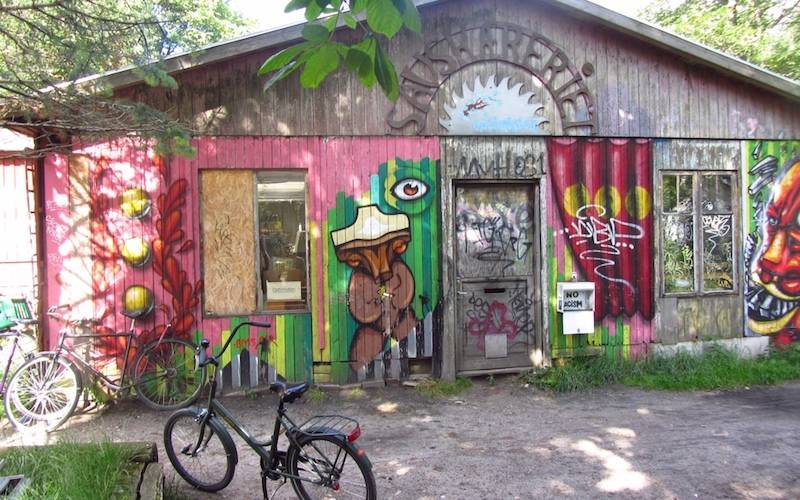
Christiania is governed by its own set of laws and regulations, and visitors are encouraged to respect these rules and the privacy of its residents. The neighborhood is known for its colorful street art, eclectic architecture, and relaxed atmosphere. Visitors can explore the area’s many cafes, bars, and shops, as well as attend concerts, exhibitions, and other cultural events.
You should be aware that Christiania is also known for its controversial cannabis trade, which has been the subject of much debate over the years. Although cannabis use is technically illegal in Denmark, it is tolerated within Christiania’s boundaries, and many visitors come to experience this unique aspect of the community. Weed is sold openly on the aptly named ‘Pusher street’ and so don’t be alarmed. The sellers will be wearing goggles, balaclavas or ski masks, but they are not harmful – just trying to protect their identity. There are two main rules of Pusher Street – no photographs and no running. Locals will tell you off if you break these.
Church of our Saviour
The Church of Our Saviour is a beautiful Baroque church located in the Christianshavn district. It was built in the mid-18th century and is known for its distinctive spire, which features an external winding staircase of 400 steps, offering stunning views of the city. The entrance is free to visit the interior of the church but you will need to pay to climb the tower, which I would definitely recommend.
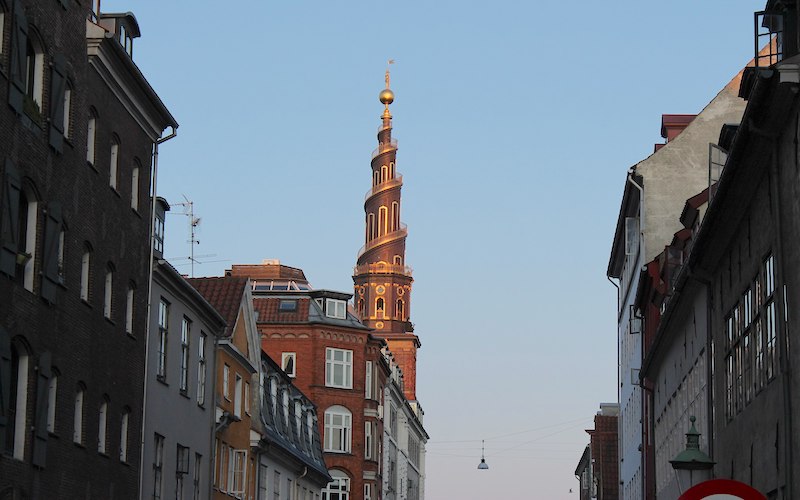
The church’s interior is equally impressive, featuring ornate decorations, beautiful paintings, and intricate wood carvings. Visitors can admire the church’s impressive organ and marvel at the intricate pulpit, which is adorned with figures of the apostles and other biblical scenes.
Day 3 – Torvehallerne Market and Rosenburg Castle to Tivoli Gardens
Day three is potentially the most fun as it includes winding up at Tivoli Gardens – an amusement park that dates back to 1843. If you are not into theme parks you could always trade Tivoli in for the Ny Carlsberg Glyptotek which is an art museum.
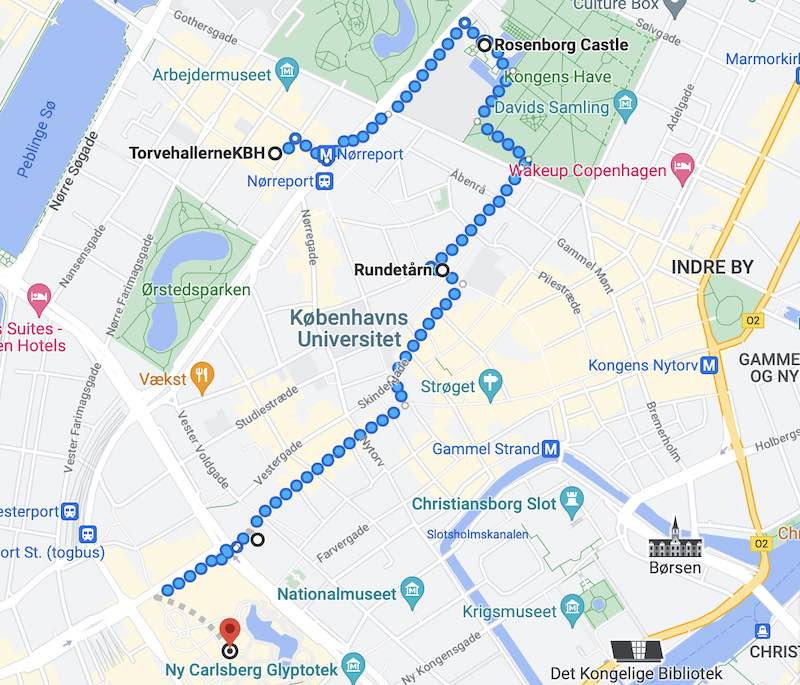
Torvehallerne Market
Start your third day at Torvehallerne Market – a popular indoor food market located in the Nørrebro district of Copenhagen. It was opened in 2011 and has since become a popular destination for locals and tourists alike who are looking for high-quality, locally-sourced food products.
The market consists of two glass-covered buildings, which house over 60 stalls selling a wide variety of food and drink. Visitors can find everything from fresh seafood and meat to artisanal cheeses and baked goods. There are also numerous cafes and restaurants offering a range of international cuisine, as well as bars serving beer, wine, and other beverages. In addition to food and drink, Torvehallerne Market also features a number of specialty shops selling items such as flowers, chocolates, and spices.
I would recommend spending around an hour to explore, but some people spend much more!
Rosenburg Castle
From Torvehallerne Market, walk to Rosenburg Castle – a beautiful 17th-century castle built in the Dutch Renaissance style. Rosenburg Castle served as a royal residence until the mid-19th century. Today, the castle is a popular tourist attraction and houses the Royal Danish Collections, which includes crown jewels, royal regalia, and other artifacts from Denmark’s rich cultural history.
Visitors to Rosenberg Castle can explore many ornate rooms, which are decorated with beautiful tapestries, paintings, and furniture from the 17th and 18th centuries. The castle’s Great Hall is particularly impressive, featuring an intricately carved wooden ceiling and walls adorned with tapestries depicting scenes from Danish history.
One of the main attractions at Rosenborg Castle is the display of the Danish Crown Jewels, which includes the Crown of Christian IV, the Crown of King Christian V, and the Queen’s Crown. The jewels are housed in a specially designed room and are guarded by soldiers from the Danish Royal Guard.
In addition to the castle’s many historical and cultural attractions, visitors can also enjoy the castle’s beautiful gardens, which feature beautiful fountains, statues, and manicured lawns. The gardens are a popular spot for picnics and relaxing in the summer months. For Rosenburg Castle and the National Museum combined, spend around 2-3 hours. Also check the opening hours as they may vary with the different seasons.
Travel Tip – Check online whether you need to book in advance – at the time of writing this blog (Easter 2023) Rosenburg Castle was booking up 2 weeks ahead!
Rundetaarn (round tower)
From Rosenburg Castle head to Rundertaarn (Round Tower). Visiting the Rundetaarn in Copenhagen is a unique and enjoyable experience that offers breathtaking views of the city. The tower is over 350 years old and is one of the city’s most recognizable landmarks. It was originally built as an astronomical observatory but is now a popular tourist attraction. Visitors can climb to the top of the tower via a spiral ramp, which was designed to allow horses and carriages to reach the top. The ramp is wide and gently sloping, making it an easy climb for visitors of all ages and abilities. On a clear day you will be able to see as far as the Øresund Bridge and Sweden! One of the unique features of the Rundetaarn is its bell chamber, which houses the oldest working astronomical clock in Europe. The clock has been in operation for over 300 years and still keeps accurate time.
Admission at time of writing – Adults 40 DKK Children (5-15 years) 10 DKK
Rådhuspladsen – City Hall Square
Rådhuspladsen, also known as City Hall Square, is the main square in the center of Copenhagen, Denmark. It is located in front of the City Hall and is one of the most popular gathering places in the city. Start by going into the Town Hall (if it’s open) to discover yet another amazing astronomical clock!
Rådhuspladsen is surrounded by shops, restaurants, and cafes, making it a popular spot for both locals and tourists to relax and people-watch. During the summer months, the square is often host to events, concerts, and festivals, including the annual Copenhagen Jazz Festival.
One of the most iconic features of Rådhuspladsen is the Carlsberg Elephant Tower, which stands at the southern end of the square. The tower was originally built as a water tower in the 19th century and is now a popular landmark in the city.
Another cute feature of the square is the statue of Hans Christian Andersen, which was erected in 1939. The statue depicts the famous Danish writer sitting on a bench with an open book, inviting visitors to sit next to him and take a photo – great for selfies!
Tivoli Gardens
Rådhuspladsen is also home to the famous Tivoli Gardens amusement park, which is located just a few steps away from the square. The park is a popular destination for families and features a variety of rides, games, and attractions. But what makes it unique is its age – it dates back to 1843 making it one of the world’s oldest and most iconic amusement parks.
The park features over 25 rides, including roller coasters, carousels, and other classic fairground attractions. There are also several stages where visitors can enjoy live music, theater, and other performances. The park’s beautiful gardens are a highlight, featuring colorful flowers, fountains, and other decorative features. Visitors can also explore the park’s numerous restaurants, cafes, and shops, which offer a range of cuisine and souvenirs.
Tivoli is a lovely place to end up and pass some time relaxing and soaking up the atmosphere. Check out the prices and packages on the website here. But if amusement parks are not your thing and you are more into art, then you might consider trading Tivoli in for the Ny Carlsberg Glyptotek (art museum).
Day 4 – Frederiksberg Have, Vesterbro and Meat Packing District
Todays walking route is around 3.3km and includes a trip from Frederiksberg through Vesterbro and ending up at the Meatpacking District where you will eat some lovely grub!
Frederiksberg Have
Frederiksberg Have is a beautiful park located in the Frederiksberg district of Copenhagen, Denmark. It covers an area of approximately 32 hectares and is one of the most popular green spaces in the city.
The park was originally created as a royal garden in the 18th century and has since been transformed into a public park that offers a variety of recreational activities for visitors. The park features lush lawns, winding paths, and beautiful gardens that are perfect for picnicking, jogging, or simply enjoying a leisurely stroll.
One of the highlights of Frederiksberg Have is the beautiful Frederiksberg Palace, which is located at the heart of the park. The palace was built in the 18th century and features beautiful architecture and stunning interiors. Visitors can take a guided tour of the palace to learn more about its history and see some of its beautiful artwork and furnishings.
Another popular feature of the park is the Chinese Pavilion, which is located on an artificial island in the middle of a lake. The pavilion was built in the 18th century and features beautiful Chinese-inspired architecture and stunning views of the park and lake.
In addition to its natural beauty and historical landmarks, Frederiksberg Have also offers a variety of recreational activities for visitors. The park features playgrounds for children, a lake for boating, and even a small zoo that is home to a variety of animals, including flamingos, peacocks, and rabbits.
Plan to spend at least 2-3 hours here, before moving on to Vesterbro – one of my favourite districts in Copenhagen!
Vesterbro
Vesterbro is a trendy and lively district located in the heart of Copenhagen, which has undergone significant redevelopment in recent years. It is now known for its hip cafes, trendy bars, and eclectic shops – dare I say it, ‘Hipster Heaven!’ Don’t worry about the sex shops and grittiness – they just add to the vibe!
Vesterbro hosts a vibrant nightlife scene, with many bars and clubs that stay open late into the night. Visitors can also enjoy a variety of cultural activities, such as visiting the district’s art galleries, attending music concerts, or catching a film at one of the independent cinemas.
Vesterbro is also home to several beautiful parks, including the popular Søndermarken and Vesterbro Parken. These green spaces offer a peaceful escape from the hustle and bustle of the city and are perfect for picnics, jogging, or simply enjoying the sunshine.
Meat Packing District
One of the highlights of Vesterbro is the Meatpacking District, which is located in the heart of the neighborhood. The area was once home to Copenhagen’s meatpacking industry but has since been transformed into a vibrant entertainment district. You can explore the area’s many restaurants, bars, and nightclubs or attend one of the regular street markets that are held in the area. The two places I really recommend are War Pigs (where I had an amazing Brisket!) and Restaurant Gorilla.
Remember – don’t stay out too late this evening! Time to get an early night for your day trip to Malmo tomorrow!
Day 5 – Malmo
On your fifth day your will have the opportunity to travel over the Øresund Bridge to spend one day in Malmo. Malmö is the third-largest city in Sweden and is located in the southern part of the country, just across the Øresund Strait from Copenhagen. Take the train from Kobenhavns Hovedbanegard (København H or Copenhagen Central) to Malmo Central which takes around 40 minutes.
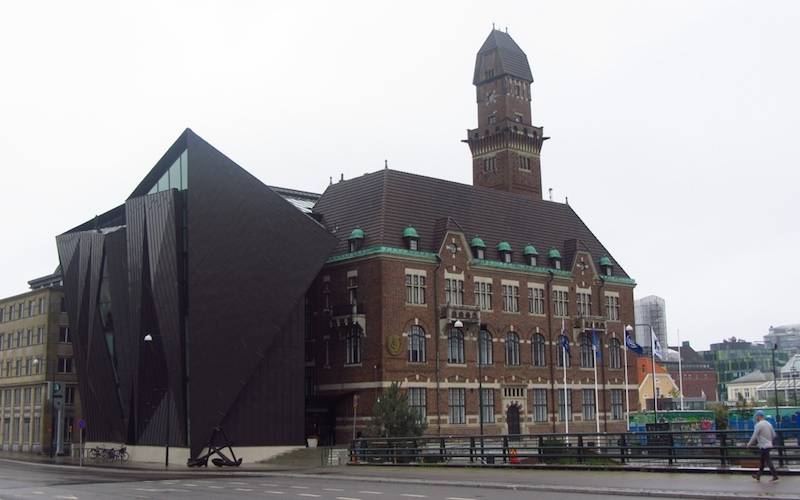
When you arrive in Malmo, you will find a very picturesque and walkable city. It’s also strikingly eco-friendly with lots of cycle paths. Focus your time on the old town with the main squares including city hall and Saint Peter’s Church. Don’t miss Malmohaus (Malmo’s Castle).
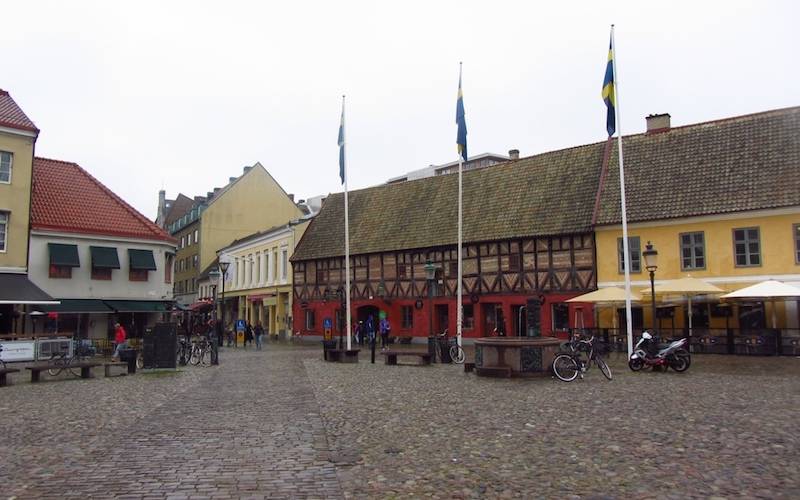
Depending on what you’re into, here are some things to see and do in Malmö:
- Turning Torso: This iconic skyscraper is the tallest building in Sweden and is located in the Västra Hamnen district. You can take a guided tour to learn more about the building’s unique design.
- Malmö Castle: Also known as Malmöhus Castle, this is one of the oldest remaining Renaissance castles in Scandinavia. It now houses several museums, including the Malmö Art Museum and the Malmö Museum.
- Lilla Torg: This charming square in the heart of the city is lined with colorful buildings and outdoor cafes. It’s a great place to grab a coffee or a meal and people-watch and my favourite place in Malmo.
- Ribersborgsstranden: This long, sandy beach is a popular spot for sunbathing, swimming, and relaxing. There are also several restaurants and cafes nearby.
- Folkets Park: This large park in the Möllevången district is a popular spot for picnics, concerts, and festivals. It also has a playground and a small amusement park.
- Malmö Konsthall: This contemporary art museum features rotating exhibitions of modern and contemporary art from around the world.
- St. Peter’s Church: This Gothic-style church dates back to the 14th century and is one of the oldest buildings in the city. It’s known for its intricate wood carvings and beautiful stained glass windows.
- City Hall: This imposing building in the center of the city is where the local government meets. It’s worth a visit to see the grand architecture and learn more about the city’s history.
- Kungsparken: This large park in the center of the city is a great place to relax and enjoy the outdoors. It features walking paths, gardens, and several sculptures.
- Moderna Museet Malmö: This modern art museum is a branch of the famous Stockholm museum and features works by contemporary Swedish and international artists.
In addition to these sights, Malmö is also known for its vibrant food scene, with many restaurants serving up innovative takes on traditional Swedish cuisine. I recommend the Swedish Meatballs in ‘La Grappa’. There are also several popular shopping districts, including the Möllevången neighborhood and the Triangeln shopping center.
If you are interested in seeing Malmo and Lund (two Swedish cities in one day!) then it is possible, but best done with a guided tour. I recommend this tour of the two Swedish cities bookable online with Get Your Guide.
Further Reading on Denmark and Copenhagen
If you found this article helpful, you might also like to read:
- Funny things that you will see or hear in Denmark
- 48 hours in Copenhagen
- Freetown Christiania before you die!
